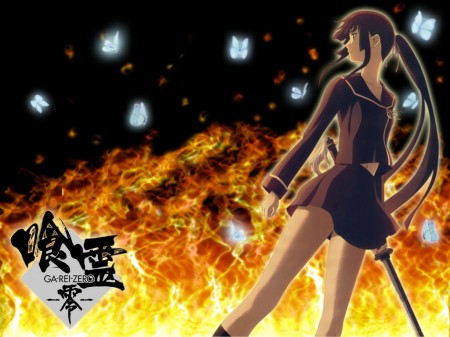Ask John: Where’s Garei Zero?

Question:
What are the chances we will have a U.S. release of Ga-Rei Zero? Personally, I’m surprised it hasn’t already been licensed given that it has many features American fans like: smooth animation, slick action, and a dark and emotional plot.
Answer:
I’m going to admit from the outset that this is a question which I don’t have a good answer for. My first impression of Garei Zero, formed by the very first few minutes of the series’ first episode, was that the show was created with international export in mind. The first dialogue heard in the show is in English. The opening episode production staff credits are in English for easy export. And the entire show is characterized by the crisp, sharp detail and realistic art design that foreign viewers take as example of Japanese animation’s maturity and difference from children’s cartoons. Garei Zero is also frequently characterized by brutal, intense graphic violence and exciting, stylized action. In practically every respect, Garei Zero exhibits the characteristics that ought to make it an especially desirable American license. Admittedly, at the time of its premiere the show did earn some criticism from skeptical American viewers that called it unoriginal. However, if similar supernatural action anime like Afro Samurai and Witchblade can top American anime sales charts, Garei Zero should have at least a remotely similar American sales potential. Certainly, without the celebrity of Afro Samurai or the American cross-over name recognition of Witchblade, Garei Zero probably won’t evenly rival the audience appeal of either of those shows. But the success of titles like Witchblade and Afro Samurai in America demonstrates that redundant action is still very viable in America if it’s presented with stylistic verve.
I think that surprise that Garei Zero hasn’t been licensed for American release yet is demonstrative of American industry observers continuing to mistakenly apply early 2000’s perspective during the late 2000s. If we were right now in 2003, I imagine that Garei Zero would be a highly sought after license prone to quickly making the leap to America. However, it’s now 2009 and the American anime licensing business is a mere shadow of what it was only five years ago. Garei Zero premiered in October 2008. That same month saw the premieres of Casshern Sins, Hokuto no Ken Raoh Gaiden: Ten no Haoh, Clannad After Story, Kannagi, Junjo Romantica 2, and Vampire Knight Guilty – all shows that have been licensed for American release only very recently. October 2008 was also the very prolific month in Japan that saw the premieres of Kurozuka, Kuroshitsuji, Kemeko DX, Michiko to Hatchin, Rosario to Vampire Capu 2, To Aru Majutsu no Index, Toradora, Mouryou no Hako, and Macademy Wasshoi – all shows that seem like candidates for American distribution. When placed in context it’s easy to theorize that an American license for Garei Zero hasn’t occured yet, but may be due soon. At the same time, it’s also possible to theorize that Garei Zero faces a lot of competition from numerous other contemporary shows with equal or stronger American market potential.
Ultimately, industry observers have to assume that a weak economy and an even weaker American anime licensing and distribution industry are to blame for the absence of Garei Zero in America. American consumers have lost a lot of interest in purchasing anime, and a lot of financial ability to purchase anime. Without consumer support many of America’s anime licensing companies have been forced to close or drastically reduce licensing operations. Statistically we’re seeing “license rescues” outnumber new title acquisitions for domestic DVD release because it’s cheaper to acquire and re-release a title that’s already been translated and localized than acquire a title that’s never been available in America before.
Garei Zero is a title that I anticipate will see American DVD release eventually. But the old adage is even more relevant now than it’s ever been before. If fans and collector’s don’t buy anime DVDs, there won’t be anime DVDs to buy. I’m very aware that current economic conditions make purchasing anime difficult. That’s why every individual purchase these days is more important to the domestic anime industry than ever before. I have to admit that there may be other behind-the-scenes obstacles that are preventing or delaying Garei Zero from reaching America. But I can’t escape the feeling that simple economics is one of, if not the primary explanation for the show’s absence.
Add a Comment
You must be logged in to post a comment.

